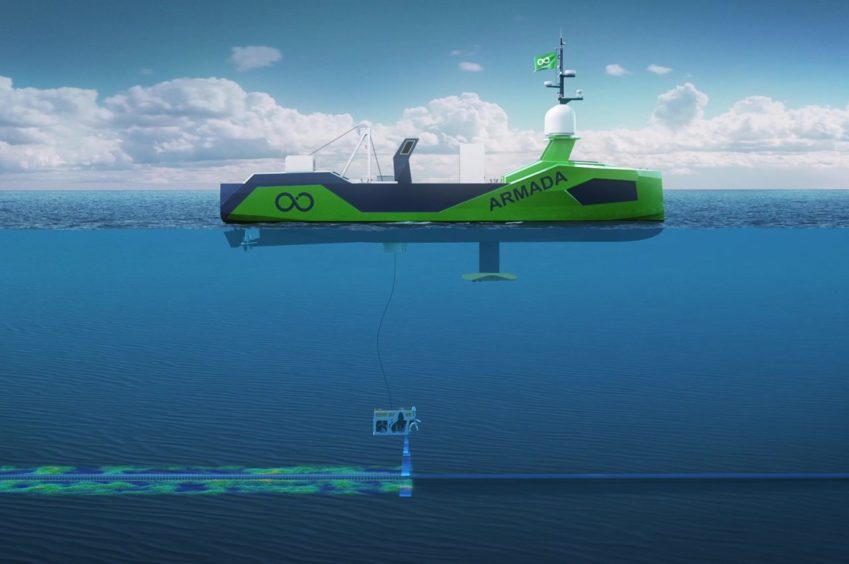
Ocean Infinity’s carbon-neutral robotic fleet seemed like an ambitious plan at launch but now the company is working on an even bigger model.
The Armada project, announced in February, covered the construction of 21-metre and 37-metre vessels. Now, though, it has plans for a 70-metre long ship.
“There aren’t many pieces of payload that we can’t put on the 37 metre but some items wouldn’t fit,” Ocean Infinity’s managing director Dan Hook said. Scaling up the company’s plans for a larger model will allow more payload, he continued, while also being better capable of handling more demanding weather and sea states.
“We didn’t want to go to customers and only be able to work in smaller weather windows. That’s been a challenge of some robotic plans in the past. Offshore Shetland in February and March is a tough place to be. For some jobs you just need a bigger boat and 70 metres is the sort of size that has historically been used.”
Head winds
The challenge of building a robotic fleet would have been demanding at the best of times. In February, when the Armada plan was set out at London’s Science Museum, few present were likely to have been thinking of coronavirus.
The pandemic has only had a marginal impact on Ocean Infinity’s plans, Hook said. The company has secured a first operations and data centre site, in Southampton, and is still looking for a similar space in Austin, Texas. The Southampton office should be running by the start of 2021.
“We’ve had some great customer interactions and there’s been a really positive pull from them. Some of them have stepped in with particular requirements and nearly all have latched on to the benefits of reduced emissions. People are keen on the lean hybrid robot approach,” Hook said.
Coronavirus has helped make the case for increased robotics, he continued. Using the Armada fleet reduces the risk of moving people around the world, which requires permits and visas and flights. At a time when seafarers have been unable to carry out crew changes, a robotic plan looks all the more attractive.
Soundings
The company is building the 21 and 37 metre ships at a yard in Norway. Hook acknowledged that there had been a delay of around two months in the delivery of the first vessels. Ocean Infinity now expects to complete these by the end of January. Trials of the new kit are expected to be held in February and March.
By this time next year, four 21-metre vessels should be in the water and working on various tasks, Hook said. Armada vessels will first work in the North Sea, with customers already lined up. Ocean Infinity expects to complete the first of the 36-metre vessels in June next year with trials to follow.
The larger vessel will be built at another yard, which has been chosen but not announced.
The Armada fleet will be able of carrying out work on a variety of offshore task, most obviously oil and gas or servicing windfarms. The company has also launched a delivery plan, which it calls Shuttle. This is focused on delivering goods from shore to shore, with no people required to be at sea.
Beyond boating
The team has also made progress on low CO2 propulsion, Hook said. The initial design involves the ships having a diesel-electric power train with a large battery supplied by Corvus Energy. The company is working on plans for a future retrofit. This would involve the use of a fuel cell for even further reductions in emissions.
The focus on carbon neutrality is likely to have particular appeal to those companies seeking to tackle their emissions. Armada will achieve this by minimising emissions where practicable, backed up with mitigation plans through reforestation.
Another area of growing interest to the company is data security.
“As you build more robots, you collect more data more quickly. We’re putting a lot of effort into handling that data as it streams across the world and processing it,” Hook said.
